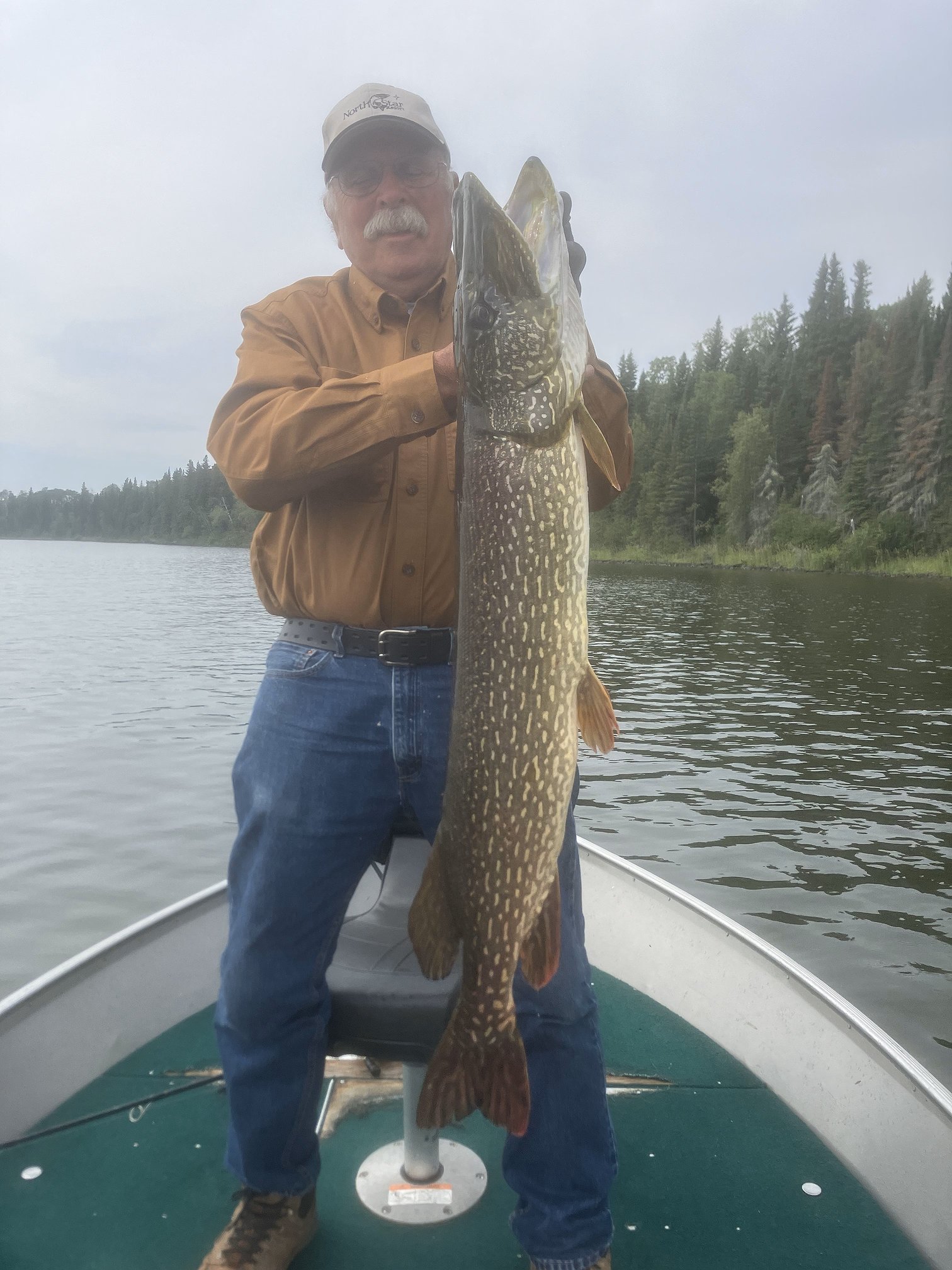Northern Pike: Love or hate?
Before we get full time into outdoor columns about hunting, let me do a final end-of-summer column about fishing.
About a month ago I wrote a column about a wonderful July morning in my fishing boat, on a quiet lake, during which I caught no fish, but had a close encounter with one of my favorite birds, the loon. A reader from Swan Lake wrote a letter to the editor calling me a hypocrite for expressing my love for loons while also being a great fan of northern pike.
First, I want to thank that gentleman for buying the Daily Inter Lake and reading my columns. He must be a regular reader of the Daily Inter Lake because I didn't mention northern pike in my loon column, but have written many times about northern pike fishing. He mentions his love for loons, but said that loons were now scarce on Swan Lake, which he blamed on the abundance of northern pike in Swan Lake.
It is common knowledge among fishermen and biologists that pike are very aggressive predators that will eat almost anything that swims in the same water where they live.
Several years ago, while cleaning a pike caught in Canada, I cut open its stomach to see what it was eating. To my surprise, the stomach contained the mostly digested remains of two ducklings. Or at least I thought they were duck chicks, but they could have been the remains of loon chicks. I have also caught many moderate size pike. On one occasion, when I went to take the lure out of the pike's mouth, I saw the tail of a large prey fish that had been caught and eaten by the pike. The pike swallowed the prey fish head-first, so its head must have been at the back of the pike's stomach, with its tail nearly sticking out the mouth of the pike.
So why did the pike grab my lure when it was stuffed full of that unlucky bait fish? I would say that pike hit my lure out of pure aggressiveness. But that's what makes northern pike loved by so many anglers. They are easy to catch, fight like the devil and are good eating.
Pike are aggressive survivors. They live in a wide range of habitats, in warm water and cold water. Some of the biggest northern pike in Northern America are now being caught in the Yukon River of Northern Alaska.
The lake that I was fishing on that July morning contains lots of northern pike as well as the pike's bigger cousin, muskies. I have no doubt that a pike eats an occasional loon chick. I've fished this lake for over 40 years and there always is several nesting loon pairs which successfully produce several loon chicks every year.
The loon and pike relationship is not unique in nature where prey and predators co-exist using the same habitat. Swan Lake has at least two other large predator fish, the lake trout and bull trout that are capable of eating loon chicks. I have no idea if those fish ever take a loon chick. In nature, most critters eventually get eaten by other critters.
Included with this column, are two photos of fishermen with large northern pike. One photo is me with a large pike taken this year during my annual fishing trip to Northern Manitoba.
Every year my wife and our son, Erik, fly 400 miles north of Winnipeg to a fly-in resort on Knee Lake. This entire 52 mile long lake is leased from the Province of Manitoba. Only guests from North Star Resort can fish this lake. To say that fishing is good is a gross under-statement! Most days we each catch 50-100 fish. The smallest fish is probably about 14-15 inches with the biggest pike being between 40-50 inches.
The photo with this article is me with my biggest pike this year, a 42.5inch monster. After a quick photo, this fish, as are all the pike we catch, are released back into the lake. The resort practices what fishermen call, CPR. That stands for catch, photograph and release to fight another day. The only fish that are removed from the lake are a half dozen good eating size walleyes which are kept in the live well until lunch time, then fileted and cooked on an open fry pan with a wood fire. Those fish go from being alive, being killed, being filleted and into the fry pan within 15 minutes. Now that's what I call fresh fish! The cooks are our also guides who cook about 50-75 of these shore lunches each fishing season, so they are highly skilled cooks.
But you don't have to drive and fly a thousand miles to catch big pike. The second photo with this column is local angler Ron Catlett. Ron is a local home builder who treats his construction crew to a guided fishing trip on Flathead Lake each year. They fish for a variety of fish, including northern pike. While Flathead Lake is known for having a variety of fish species, the north end of the lake and the Lower Flathead River are well known for having some giant northern pike. Ron's big pike is of a 43.5 inch long northern pike weighing over 23 pounds. Now that is a world class fish!
So, whether you love or hate northern pike, they are in our local lakes- forever. Might just as well enjoy fishing for them and eating them.



